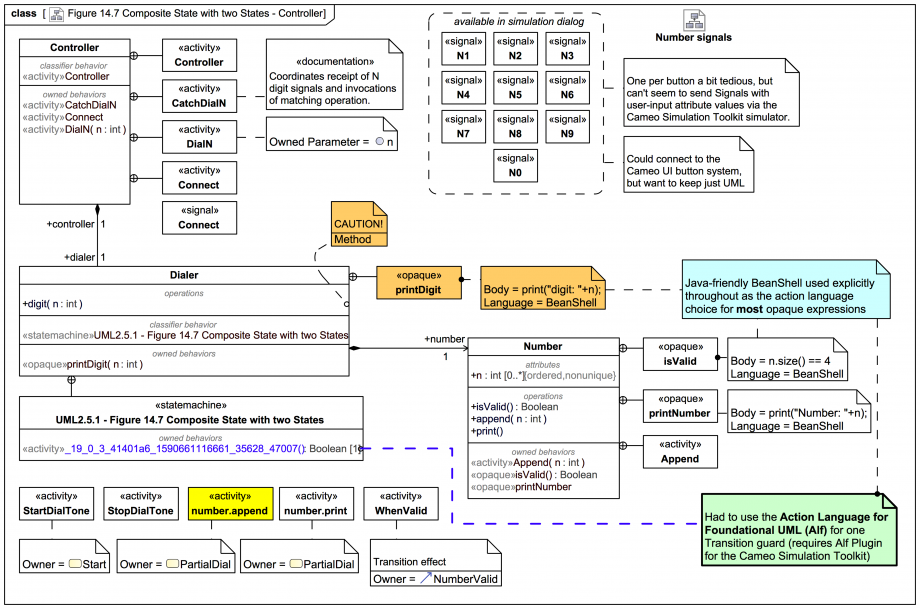Tags and keywords
Number is chosen for a class that manages a list of digits represented as:
n : int[0..*] {ordered,nonunique}
It also has the following operations:
isValid():Boolean: Whether we have enough numbers to be a valid phone number. In this simplified demo here we are going to assume that 4 digits is enough (to save time) and perform no further checking. The method is an OpaqueExpression of the same name in the BeanShell scripting language.append(n:int): Adds another digit to 'n'. This will use an Activity as method that we'll explore in detail later.print(): Prints the current list of 'n' to the simulation terminal window using an OpaqueBehavior in BeanShell.
A number:Number[1] is managed by a Dialer class, which has our main StateMachine of interest as classifier behavior. It has an operation digit(n:int) we'll be using to help trigger Transitions.
digit(n:int) deliberately does not have a method assigned, otherwise an AcceptEventAction or AcceptCallAction can't catch a matching CallEvent!
It also has an owned behavior for printing digits to the simulation terminal.
And we need a Controller to coordinate everything, with an Activity of the same name as its classifier Behavior. It has some owned Behaviors we'll look at in more detail next, but for now, note that it not only coordinates dialing, it can also react to an additional Signal Connect. Clearly, however, we don't want to connect unless the number dialed so far is valid, which its Behavior knows how to handle using guards.
We're going to work our way up from the simpler lower-level Activities to place them in context, as shown next


